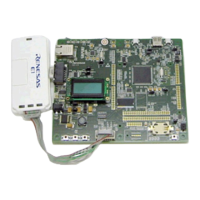R01UH0823EJ0100 Rev.1.00 Page 1799 of 1823
Jul 31, 2019
RX23W Group 51. Electrical Characteristics
Figure 51.59 Illustration of A/D Converter Characteristic Terms
Absolute accuracy
Absolute accuracy is the difference between output code based on the theoretical A/D conversion characteristics and the
actual A/D conversion result. When measuring absolute accuracy, the voltage at the midpoint of the width of analog
input voltage (1-LSB width), that can meet the expectation of outputting an equal code based on the theoretical A/D
conversion characteristics, is used as an analog input voltage. For example, if 12-bit resolution is used and if reference
voltage (VREFH0 = 3.072 V), then 1-LSB width becomes 0.75 mV, and 0 mV, 0.75 mV, 1.5 mV, ... are used as analog
input voltages.
If analog input voltage is 6 mV, absolute accuracy = ±5 LSB means that the actual A/D conversion result is in the range
of 003h to 00Dh, although an output code, 008h, can be expected from the theoretical A/D conversion characteristics.
Integral non-linearity error (INL)
The integral non-linearity error is the maximum deviation between the ideal line when the measured offset and full-scale
errors are zeroed, and the actual output code.
Integral nonlinearity
error (INL)
Actual A/D conversion
characteristic
Ideal A/D conversion
characteristic
Analog input voltage
Offset error
Absolute accuracy
Differential nonlinearity error (DNL)
Full-scale error
FFFh
000h
0
Ideal line of actual A/D
conversion characteristic
1-LSB width for ideal A/D
conversion characteristic
Differential nonlinearity error (DNL)
1-LSB width for ideal A/D
conversion characteristic
VREFH0
(full-scale)
A/D converter
output code

